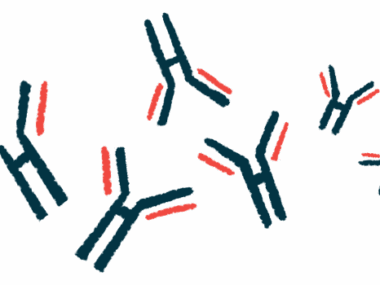Polyautoimmunity may raise relapse risk in NMOSD: Study
Long-term disability outcomes don't differ with, without co-occurring diseases
Written by |

People with neuromyelitis optica spectrum disorder (NMOSD) often have other co-occurring autoimmune diseases and those who do have a significantly higher risk of a relapse than people with NMOSD alone, a study in Portugal suggests.
Long-term disability outcomes didn’t differ between the two groups, however, suggesting “appropriate treatment may prevent a more severe clinical course and result in a similar functional outcome,” the researchers wrote.
The study, “Polyautoimmunity and multiple autoimmune syndrome in patients with neuromyelitis optica spectrum disorder,” was published in Multiple Sclerosis and Related Disorders.
In autoimmune diseases, the body’s own healthy tissues undergo abnormal immune attacks. In NMOSD, these immune attacks cause inflammation and damage to the spinal cord and optic nerves, which connect the eyes to the brain. Most cases are associated with the production of self-reactive antibodies against AQP4, a protein mainly found on neuron-supporting cells.
Autoimmune diseases tend to co-occur; it’s one of their hallmark features. If someone has one autoimmune disease, they are more likely to develop additional autoimmune disorders. This is referred to as polyautoimmunity and it’s been increasingly described with NMOSD, even though “the prevalence and significance of this association are not fully understood,” the researchers wrote.
A team of scientists in Portugal sought to compare disease features in NMOSD patients who did or didn’t have polyautoimmunity by reviewing data from 46 patients treated at a center between 1992 and 2022.
The effect of polyautoimmunity on NMOSD
Sixteen patients (34.8%) had at least one other autoimmune disease co-occurring with NMOSD, meeting the criteria for polyautoimmunity. Six of them (37.5%) had at least two other autoimmune diseases along with NMOSD.
The most common co-occurring autoimmune diseases were lupus, Sjogren’s syndrome, and myasthenia gravis, all of which have been reported to co-occur with NMOSD in other studies of polyautoimmunity. One NMOSD patient had an autoimmune condition called IgG4-related disease, which hasn’t been documented to co-occur with NMOSD.
“In our real-world study of NMOSD we identified a high frequency of polyautoimmunity,” which “suggests the existence of common susceptibility factors or [disease-associated] mechanisms, emphasizing the importance of a multidisciplinary approach to those patients,” the researchers wrote.
Among the 16 NMOSD patients with polyautoimmunity, 10 were positive for anti-AQP4 antibodies (62.5%). Four patients were positive for self-reactive antibodies against myelin oligodendrocyte glycoprotein (MOG) and two were negative for any of these antibodies.
By some modern definitions, patients with anti-MOG antibodies wouldn’t be classified as having true NMOSD, but for their purposes, the researchers considered all these patients as being on the NMOSD spectrum.
For half the patients with polyautoimmunity, other autoimmune diseases developed before the onset of NMOSD, with a median of 15 years between onsets. Five patients (31.3%) were first diagnosed with NMOSD and then developed co-occurring conditions, while the remaining three had a simultaneous diagnosis.
Patterns of initial NMOSD symptoms were comparable between patients with and without polyautoimmunity, “emphasizing the need for screening for anti-AQP4 and anti-MOG antibodies in patients with AID [autoimmune disease] and acute neurological syndromes such as [optic nerve or spinal cord inflammation], among others,” the researchers wrote.
The patients were followed for a median of 10 years. Those with polyautoimmunity were significantly more likely to have periods of stable disease interspersed with periods of disease relapse (75% vs. 46.7%) and significantly to have relapses (median of two vs. one) over those without polyautoimmunity. A significantly greater proportion of polyautoimmunity patients also had high levels of protein in the fluid around the brain and spinal cord, a marker of neuroinflammation.
“All patients in our study remained on maintenance treatment,” the researchers wrote, adding that treatment choices were influenced by co-occurring conditions.
Despite the higher frequency of relapsing disease, neuroinflammation, and more relapses among NMOSD patients with polyautoimmunity, disability levels were comparable with those who didn’t have polyautoimmunity, as assessed with the standard Expanded Disability Status Scale. Both groups had a median score of 2.
“One can argue that these treatments have shown promising results in the management of NMOSD,” wrote the researchers, who noted they validated some previous findings about the co-occurrence of other autoimmune diseases and NMOSD, especially in the anti-AQP4 positive group. The researchers said they also “identified some differences on paraclinical data and recurrence risk of patients with and without additional [autoimmune diseases]” that require more research as they “may influence our approach” to NMOSD patients.






